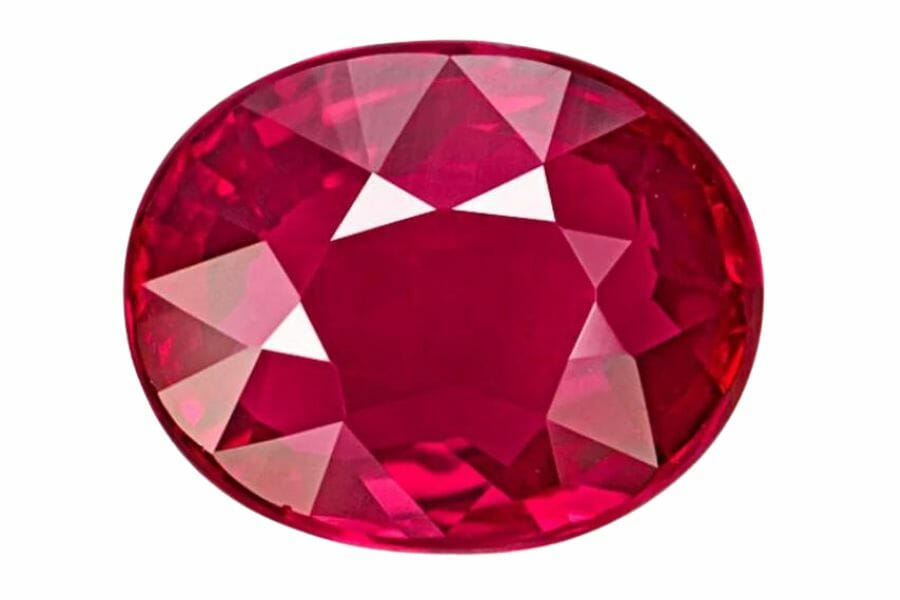It’s common for people to get garnets and rubies mixed up, especially when they see a red gemstone. However, they have unique properties and characteristics that make them distinct from one another.
Let’s compare garnets vs rubies to get a clearer picture. Garnet, with its wide color spectrum ranging from red to green, is actually a group of minerals. Ruby, on the other hand, is known for its deep red hue, a signature characteristic of this stone.
Beyond just color, these stones have variations in hardness, crystal structures, and even places of origin.
Whether you’re a budding gem enthusiast or someone looking to buy jewelry, understanding these differences and similarities can help you make informed choices.
Garnets vs Rubies – The Major Differences
Garnet and ruby are both beautiful gemstones that many people love. Though they might look similar at first, they have quite a few differences.
Colors – Rubies only come in shades of red
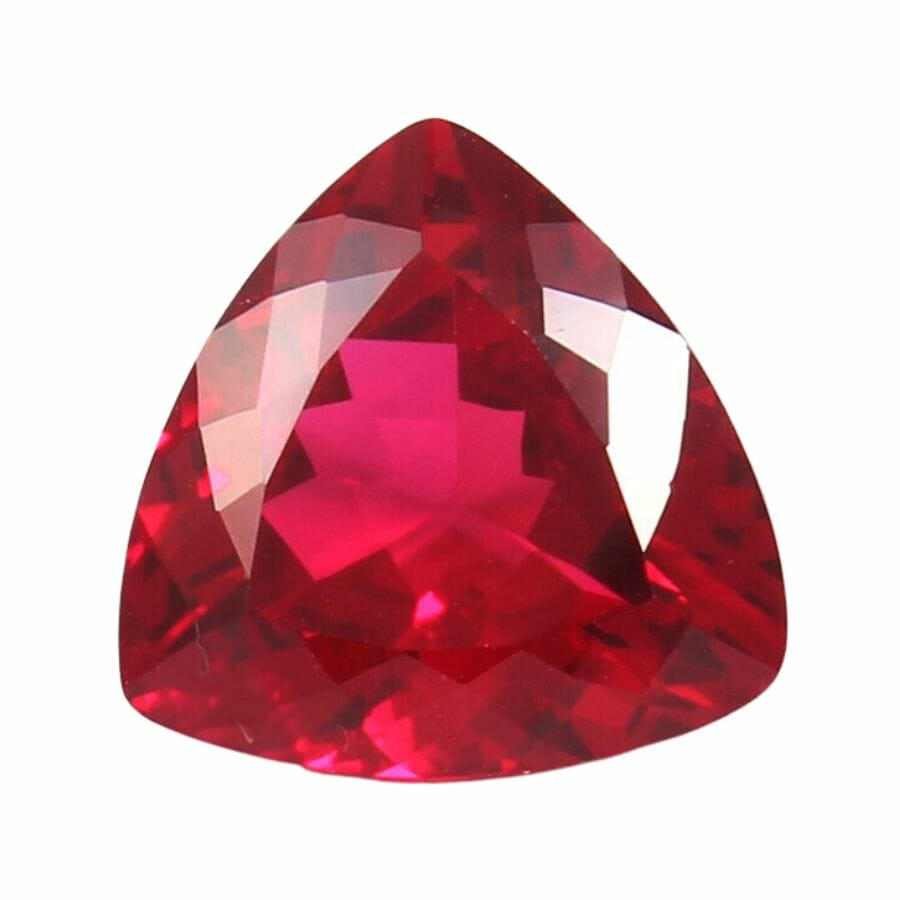
Perhaps the most obvious difference between garnets and rubies lies in their range of colors. Garnets, for one, are like the chameleons of the gem world.
Even though many people think of them as red stones, garnets come in a whole rainbow of colors.
You can find garnets in shades of green, which can be light or deep, and even in vibrant oranges. Some garnets even have a beautiful purple hue, making them stand out in any jewelry collection.
Here’s something even cooler about garnets: there are blue ones! But, if you ever come across a blue garnet, know that you’ve found something pretty rare. These aren’t the kind of gemstones you’d stumble upon easily.
On the other hand, rubies keep things simple. They’re red, plain and simple. If you’re looking at a ruby, it’s always going to be a shade of red, no matter what.
Ruby is essentially a red corundum. When a corundum is red, we call it a ruby. But when it appears in any other color, like blue or yellow, it’s typically labeled as a sapphire.
This means that, outside of the red hue, sapphires can showcase a rainbow of colors.
Appearance – Garnets can be transparent to opaque
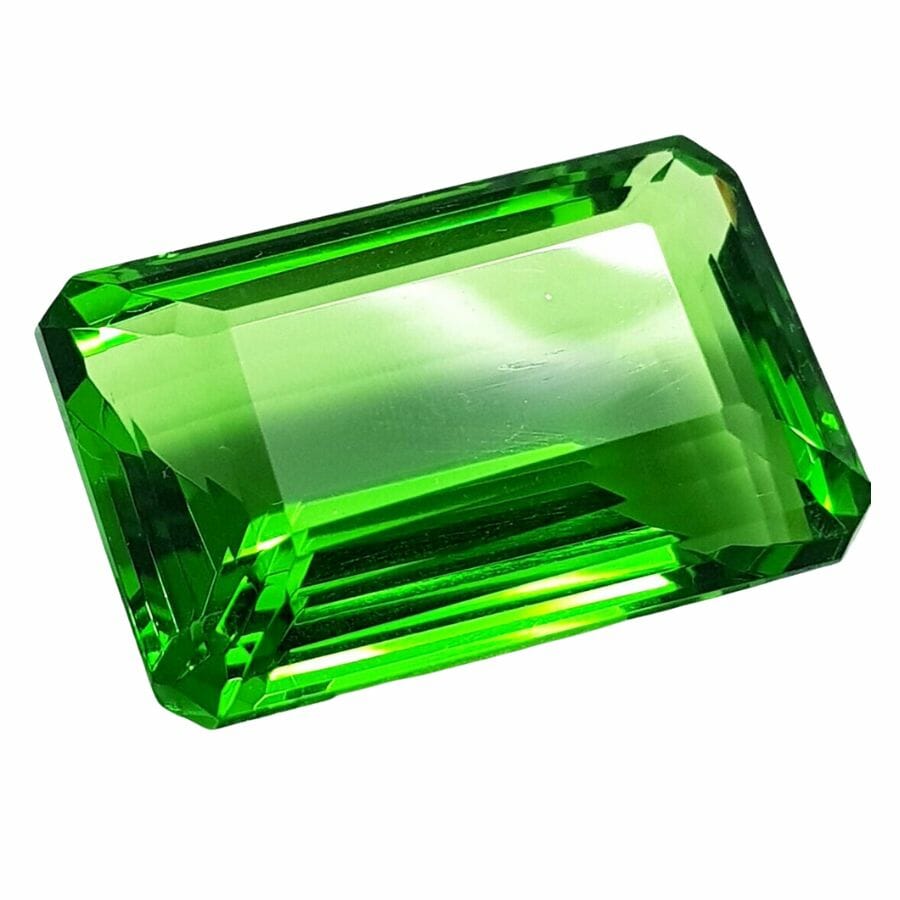
Garnets and rubies have some noticeable differences in appearance that can help anyone tell them apart.
The appearance of garnets varies quite a bit. They can be almost completely transparent or opaque.
But most of the time, they sit somewhere in between, being sort of see-through but not completely, which is called translucent. This makes them unique because depending on the specific garnet, you might see more or less light pass through it.
When you come across a ruby, especially one that’s high-quality or what experts call “gem-quality,” it’s almost always see-through to a certain extent. This means they allow more light to pass through them.
It’s pretty rare to find a high-quality ruby that isn’t at least somewhat transparent. This transparency gives rubies that special sparkle when light hits them, making them a favorite for jewelry like rings and necklaces.
Hardness – Rubies are much harder
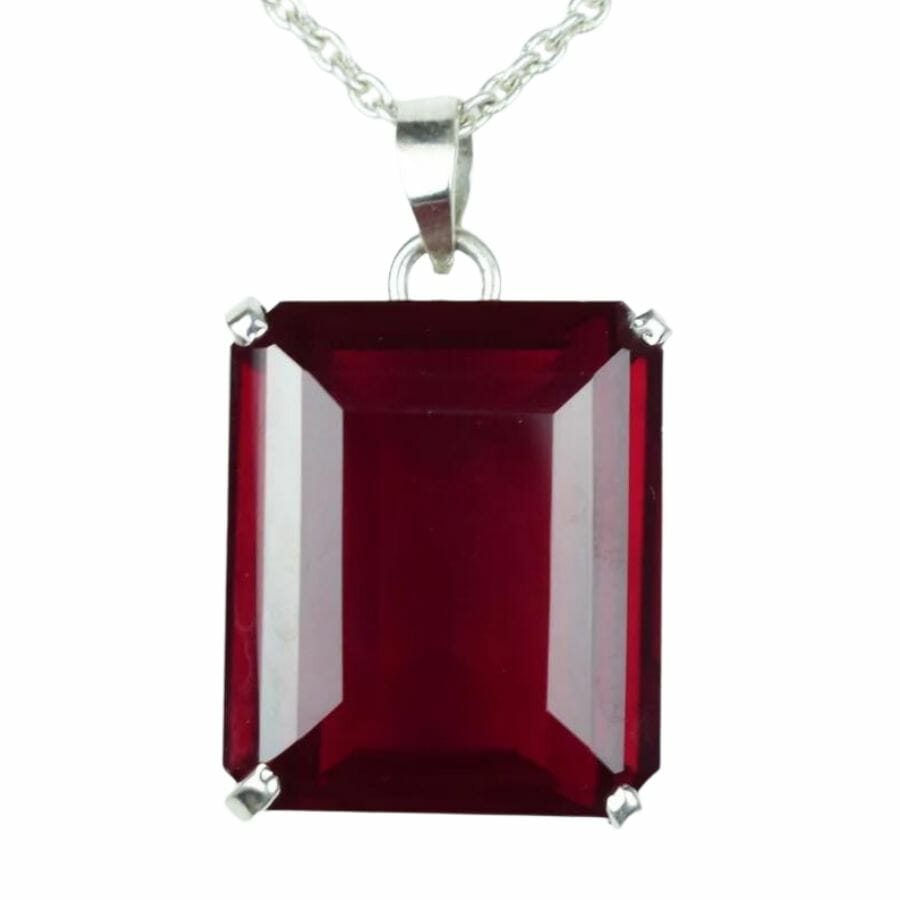
Hardness is a big deal when it comes to gemstones. It tells us how resistant a stone is to scratches, and it can also hint at how durable the stone might be in jewelry.
The Mohs scale is like a ruler for measuring this hardness, and it goes from 1 (really soft) to 10 (super hard, like a diamond).
Garnets are decently hard, landing between 6.5 and 7.5 on the Mohs scale. That means they’re pretty resistant to scratches, and you won’t have to baby them too much.
If you have a garnet ring or necklace, it can handle everyday wear without getting scratched up easily. Still, it’s always a good idea to be a bit careful.
Rubies, on the other hand, rank at a whopping 9 on the Mohs scale. That’s super close to a diamond, which is the hardest natural thing we know of. This makes rubies not just beautiful but also incredibly tough.
If you wear a ruby ring, it’s going to stay shiny and scratch-free for a long time. This is one reason why rubies are so loved for jewelry: they look stunning and can handle the hustle and bustle of daily life without a hitch.
Luster – Garnets have a glass-like shine
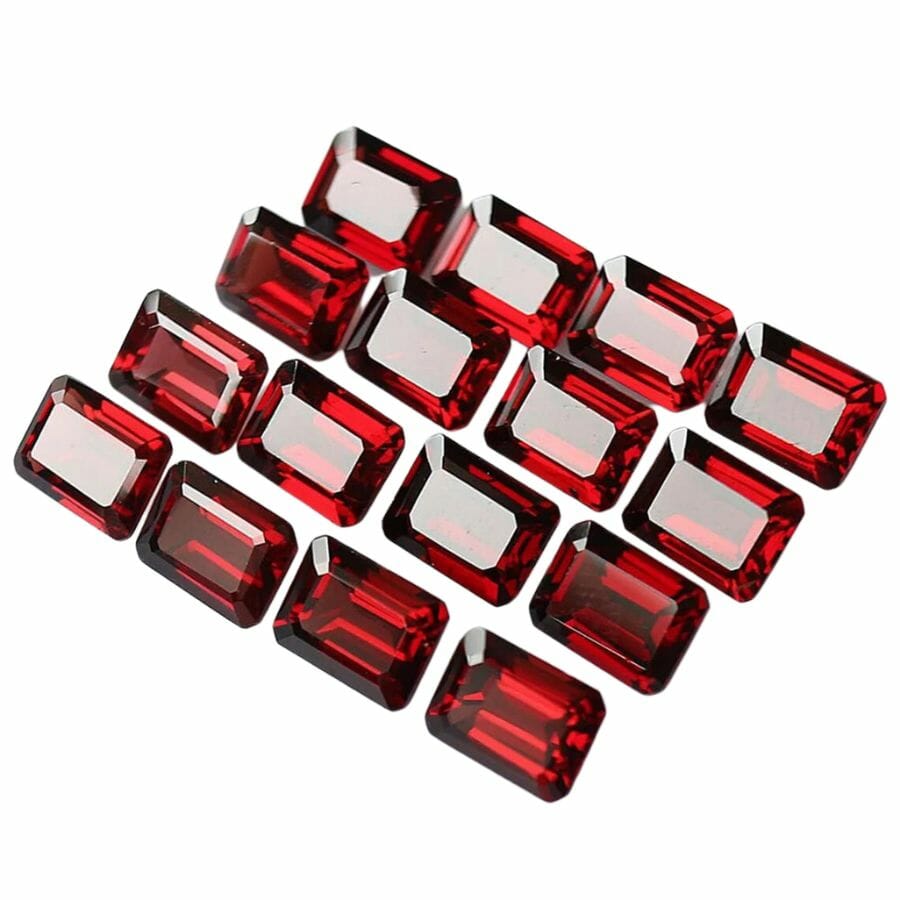
Luster describes the way a mineral reflects light. It’s what gives gems their shine and sparkle, and it’s a key feature that jewelers and gemologists look at to identify and classify stones.
Garnets, those vibrant and diverse gemstones, are typically known for their vitreous luster. This means they reflect light in a way that’s similar to glass.
Some garnets can also have a resinous luster, which means they shine like resin or tree sap. This gives them a kind of soft glow, especially when they’re held up to the light.
Now, rubies are a bit different but still share some similarities with garnets. Rubies can have what’s called a subadamantine luster. That’s a fancy way of saying they shine almost like a diamond but not quite.
Apart from that, rubies can also exhibit a vitreous luster, much like garnets. In certain conditions, and especially on partings or layers within the stone, rubies might have a pearly luster, which gives them a silky, iridescent shine.
Crystal structure – Ruby crystals have six sides
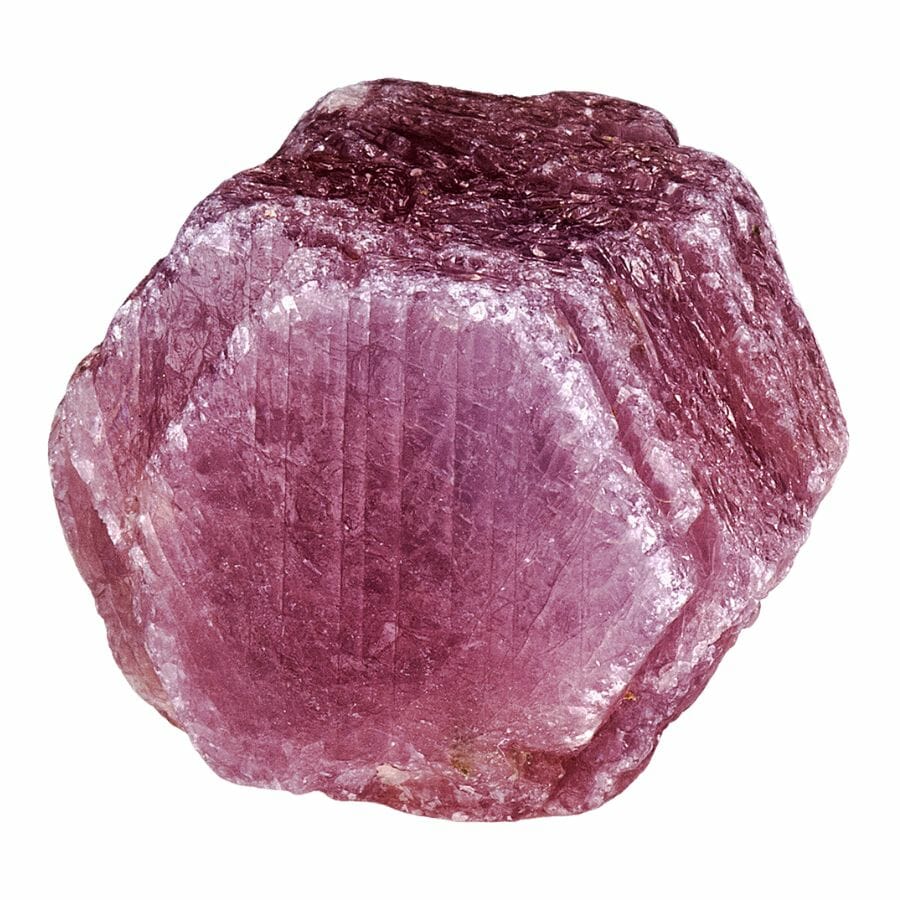
Crystal structure is like the blueprint of a gemstone, shaping how it grows and what it looks like. Think of it as the gem’s blueprint, giving each one its unique look.
Starting with garnets, they have what’s called an isometric crystal system. When you look at garnet crystals, you might notice shapes that are like 12-sided dice, called rhombic dodecahedron, or they might look like tiny cubes.
Meanwhile, rubies belong to the trigonal crystal system. In simpler words, their crystals grow in a three-sided pattern.
When you take a close peek at ruby crystals, you’ll see shapes that look like long six-sided tubes, known as terminated tabular hexagonal prisms.
They might remind you of a pencil or a long hexagon, but with flat ends.
These differences in crystal structure aren’t just cool science facts. They also affect how light plays inside the stone, the gem’s shine, and even its color.
So, the next time you’re admiring a garnet or ruby, remember there’s a whole world of cool shapes hiding inside!
Chemical composition – Garnets have a variety of types
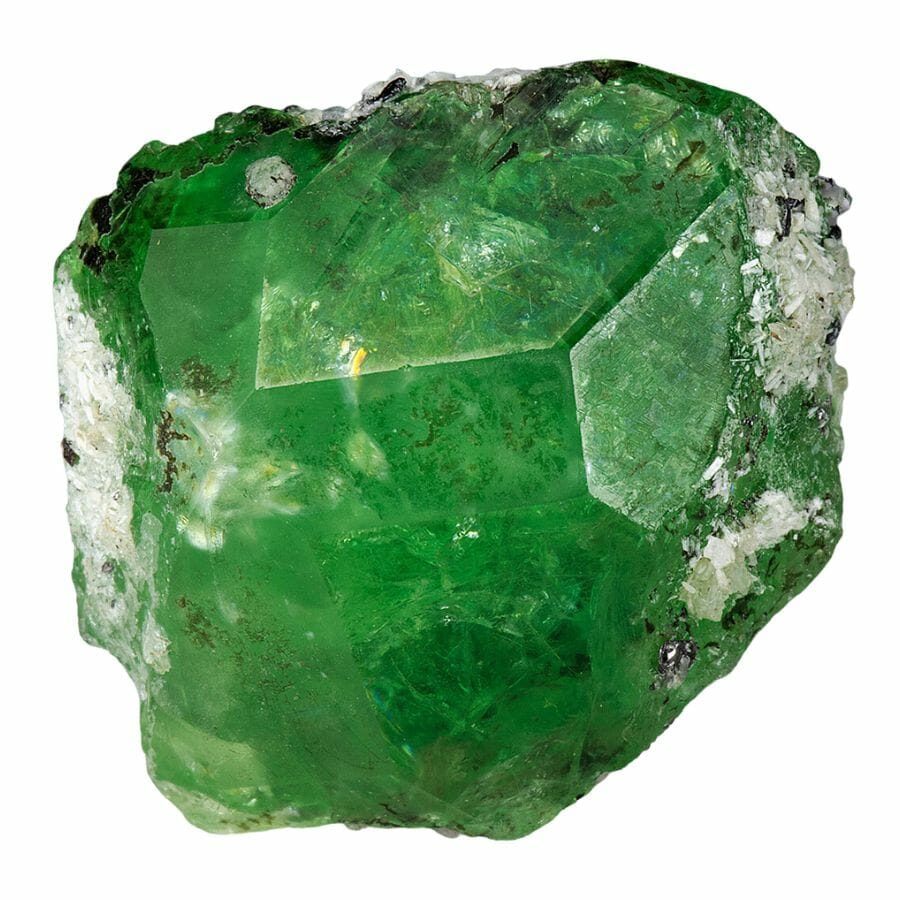
The chemical composition of garnets and rubies can be as fascinating as their sparkling outsides. Dive deep into these two gems and you’ll find they’re made up of very different stuff.
Garnets aren’t just one thing; they’re a whole family of gemstones. Each type of garnet, known as a species, has its own special mix of elements. There’s pyrope and almandine, which are the classic reds most people think of.
Then there’s spessartine, which has a dash of manganese making it bright orange. Grossular is another type, with some cool varieties like hessonite that’s a warm, cinnamon color and tsavorite that’s a bright green.
Uvarovite and andradite are also part of the garnet gang, each with its own unique shade and sparkle. Each type of garnet has its own recipe, its own blend of elements that give it its characteristic color and shine.
Rubies have a simpler story. They’re made of something called aluminum oxide, also known as corundum. It gets its iconic red color from its chromium content. So, every time you see a ruby’s red glow, you’re seeing the magic of chromium at work.
Density – Rubies have a more consistent density range
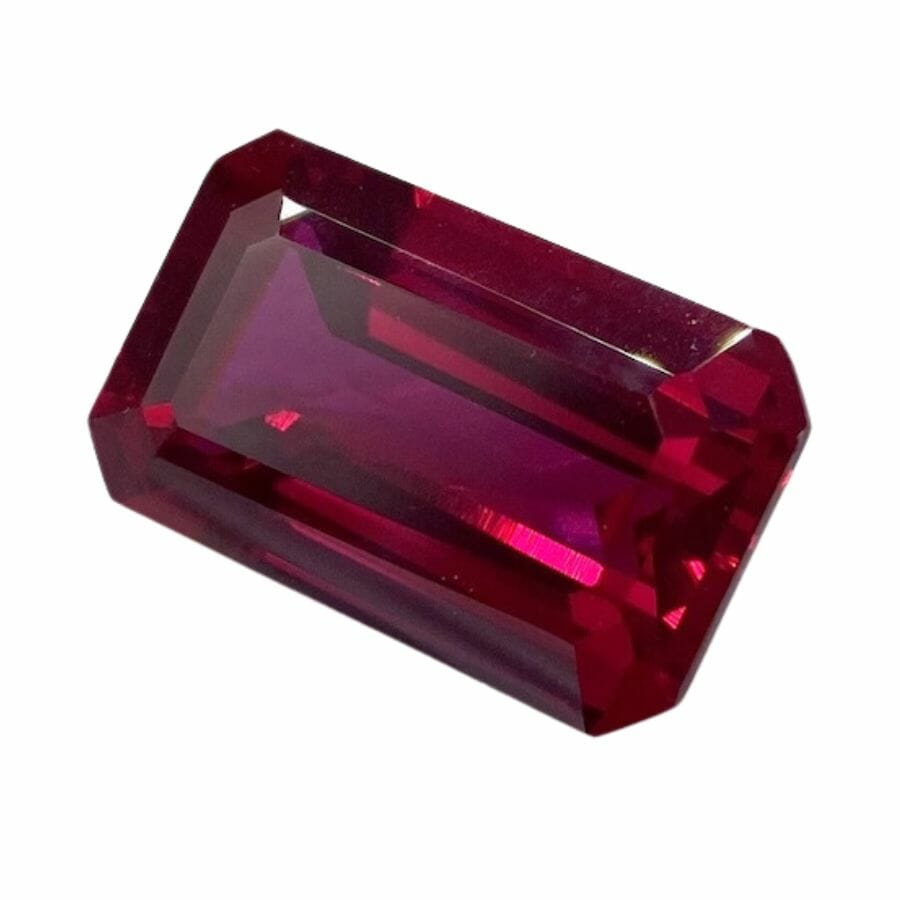
Density is a neat way to measure how much material is packed into a space. It can offer clues about the identity of gemstones like garnet and ruby.
Garnets, being a diverse family of stones, have densities that can hop around a bit. Depending on the type of garnet, the density can be as light as 3.1 g/cm³ or as heavy as 4.3 g/cm³. This is a pretty wide range
Imagine two boxes of the same size, but one is packed with feathers and the other with sand. The one with sand is denser because there’s more matter packed in that space.
Rubies, on the other hand, are more consistent in their density. They typically hang out in the range of 3.97 to 4.05 g/cm³. That means if you were to randomly pick up a ruby from anywhere in the world, its density would likely fall within this small range.
Magnetism – Garnets can have some magnetism
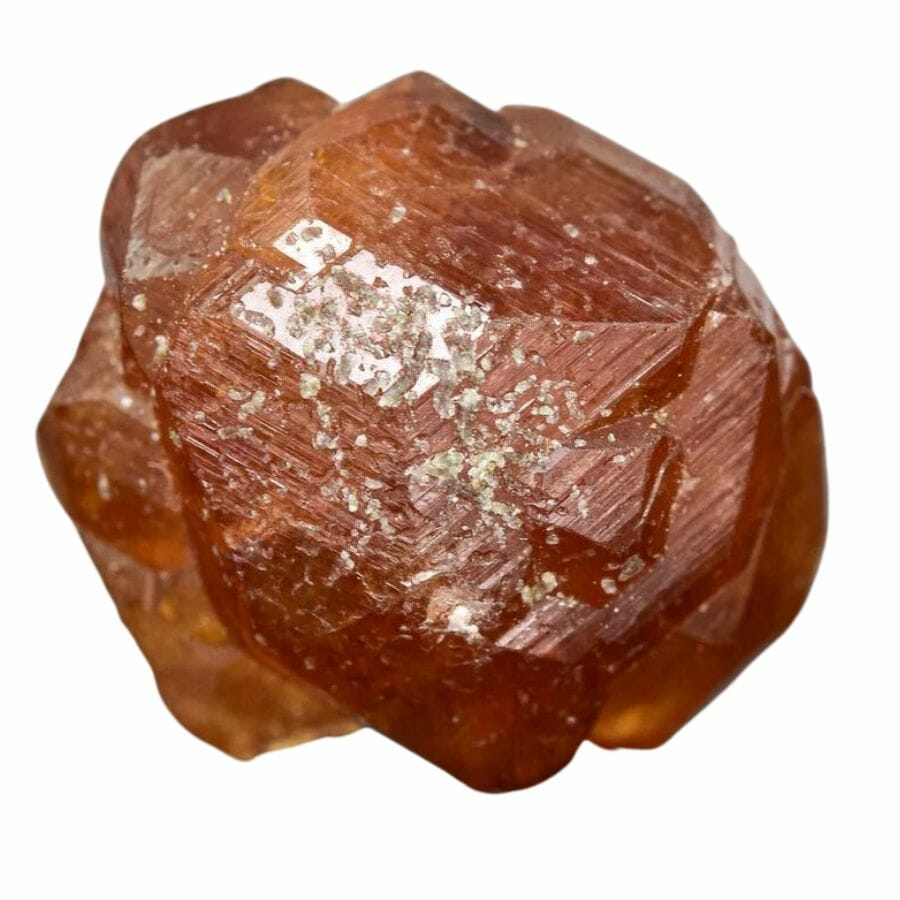
Magnetism might not be the first thing you think of when talking about gemstones, but it’s actually a pretty cool topic when distinguishing rubies vs garnets.
Garnets are a diverse bunch, and some members of this family have a bit of iron in their makeup. As we know, iron can be magnetic.
Now, don’t expect a garnet to stick to your fridge like a magnet! The magnetic pull in some garnets is usually pretty weak, but it’s there.
If you were to use a strong magnet and bring it close to these garnets, you might notice a slight attraction. This is all thanks to the iron inside them.
Rubies, on the other hand, are not magnetic at all. The chemical makeup of rubies doesn’t include elements that respond to magnets.
Fluorescence – Rubies glow a bright red color under UV light
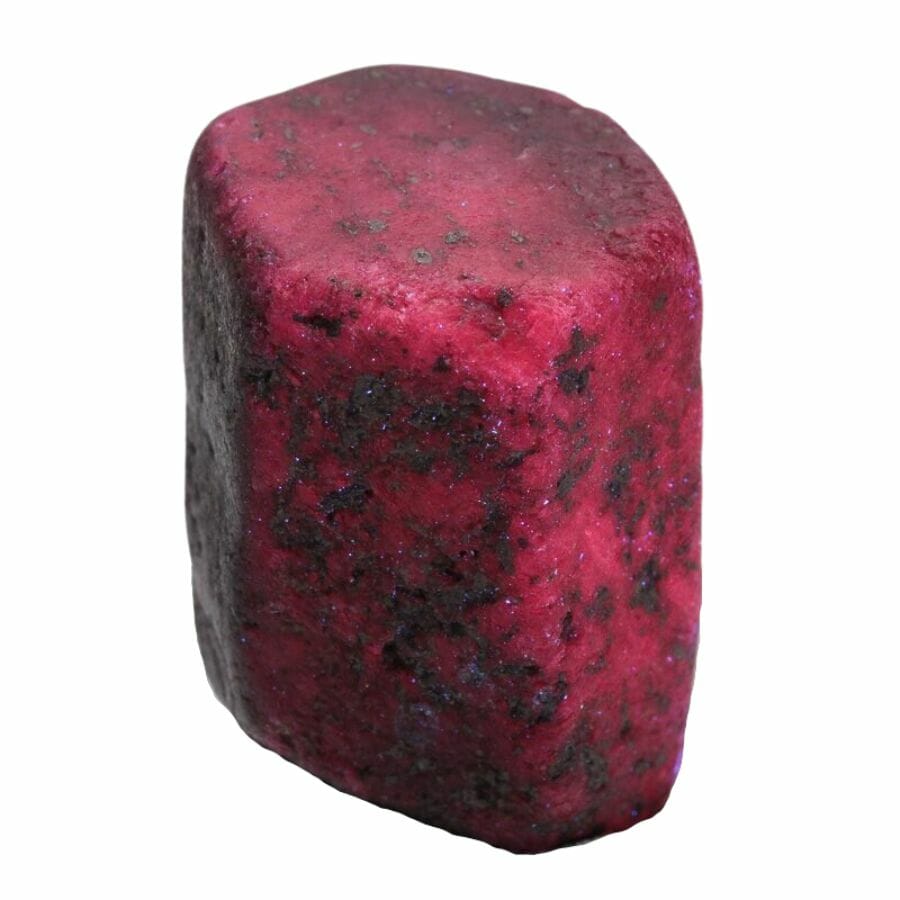
Fluorescence in gemstones is a bit like their secret superpower. When hit with certain types of light, some stones glow, revealing a hidden side of themselves.
Most garnets don’t usually glow or show off any fluorescent properties. However, some green garnets do step into the limelight. Among these, the grossular garnets, especially tsavorite, can give off a subtle show.
When exposed to long UV light, they might glow a faint orange, and under short UV light, they might hint at a pale yellow. It’s like a soft glow-in-the-dark sticker, but not every green garnet will do this.
Rubies are a different story. Some of them, especially those found tucked inside marble from places like Burma or Vietnam, have a really strong fluorescent game. Even in regular daylight, rubies can exhibit a strong red fluorescence.
Price – Garnets are generally more affordable
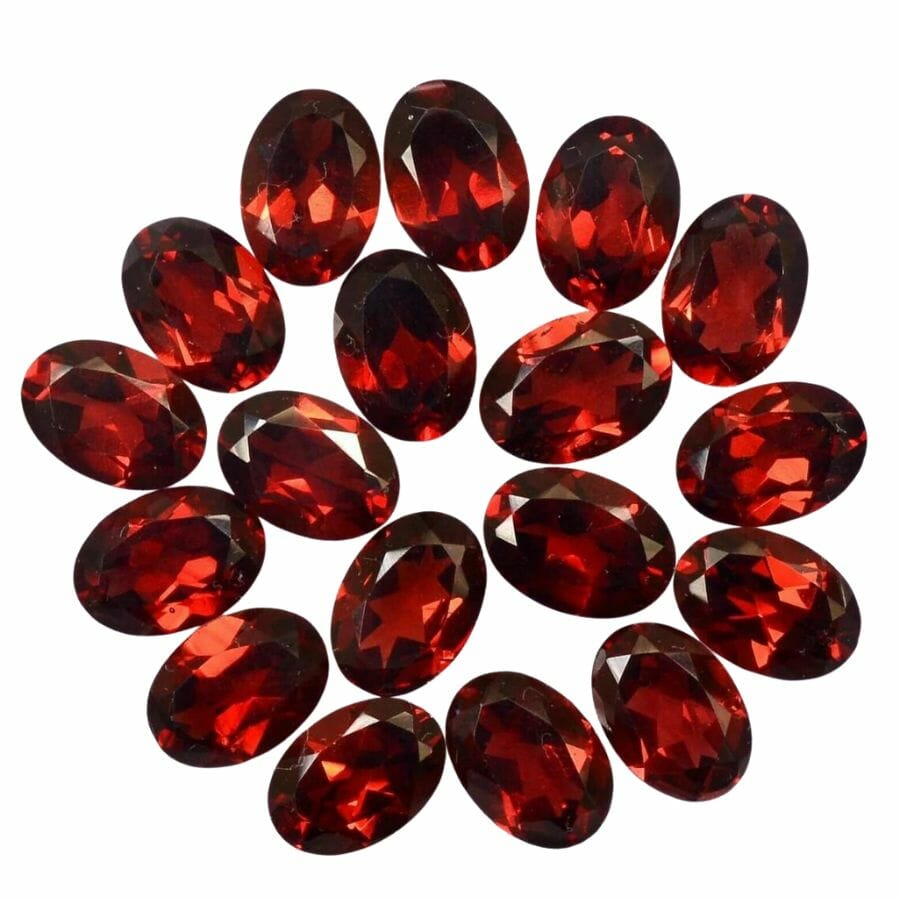
Garnets, while beautiful and diverse, are generally kinder to your wallet. There are many factors that play into this.
For one, garnets are more common and can be found in various parts of the world, making them easier to obtain. Plus, with a range of types and colors, there are many garnets available for different budgets.
Whether you’re looking for a simple piece of jewelry or a gem for a collection, there’s likely a garnet that fits the bill without breaking the bank.
Rubies, on the other hand, are like the celebrities of the gemstone world. High-quality rubies, with their deep red color and clear appearance, are rare.
When you find a top-notch piece, it’s like finding a rare treasure, and that drives the price of rubies up.
The demand for these stunning stones, combined with their rarity, means they can fetch incredibly high prices in the market. Some famous rubies have even sold for millions at auctions!
Location – Rubies can be found in the US
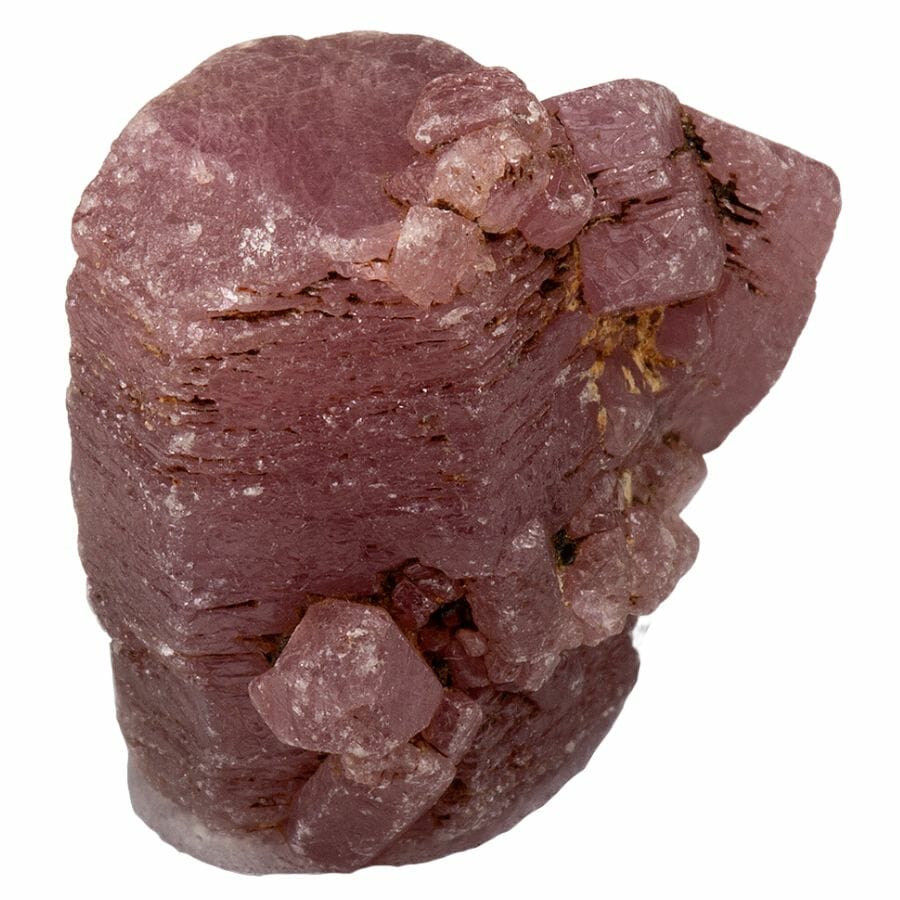
Garnets are a diverse group, and their locations around the world reflect this diversity. In Brazil, you’ll find a multitude of garnet types. Over in Namibia, there’s a significant presence of spessartine garnets flaunting their intense orange shades.
Kenya’s Scorpion mine is a hotspot for tsavorite garnets. Afghanistan and Pakistan, neighbors, share a common treasure in spessartine garnets, with Pakistan’s Kashmir region boasting some particularly dazzling specimens.
Sri Lanka offers up rhodolite garnet, known for its deep reddish-purple hue. India is known for its red garnets, and Myanmar showcases a variety of garnets, including the reddish-orange spessartine.
And don’t forget Russia, the original keeper of the demantoid garnet.
Rubies paint a global map too. Historically, Thailand was a major ruby supplier, but rubies have also been unearthed in places like Cambodia, Afghanistan, and even Australia. Europe has its ruby star too – the Republic of North Macedonia.
A few U.S. states, namely Montana, North Carolina, South Carolina, and Wyoming, have seen their share of rubies. If you’re in these states, finding gems near you can be easier than you might expect!
Myanmar was the ruby crown jewel for ages. Pakistan’s Kashmir is ruby-rich, but mining activities are limited.
Greenland’s Aappaluttoq mine claims some of Earth’s oldest rubies, and it’s trackable, ensuring ethical sourcing.
Then there’s Mozambique, the new ruby giant. Since discovering rubies in 2009 in the Montepuez region, it has rapidly grown to become a leading source of top-quality rubies.
Rubies vs Garnets – The Similarities
Garnet and ruby are two gemstones that can sometimes look a lot alike. Even though they have their differences, they also share some interesting similarities. Let’s dive into what makes these two stones more alike than you might think.
Streak – Garnets and rubies leave a colorless streak
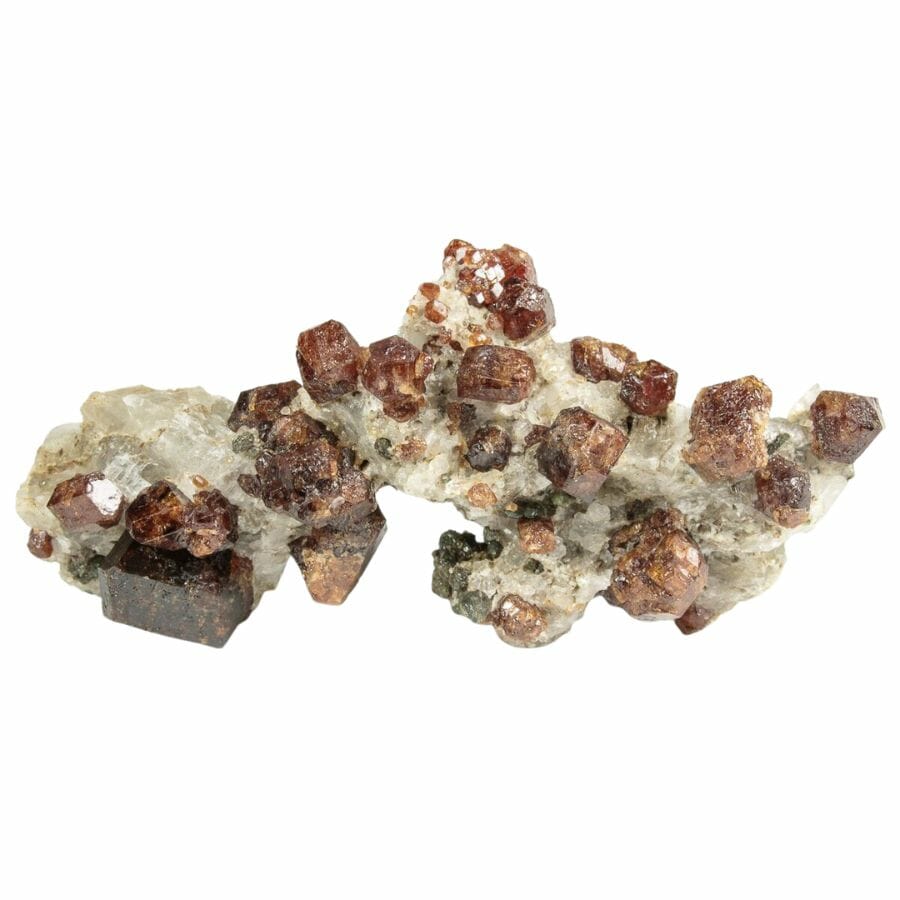
When you’re exploring the world of gemstones, certain characteristics can help identify and classify them. One such feature is the streak of a mineral.
The streak test involves rubbing a gemstone on a streak plate, which is usually a piece of unglazed porcelain, to see the color of the powder left behind. This can often be different from the color of the gemstone itself.
Garnet and ruby share a similarity in this aspect. Both these gemstones produce a colorless streak on the streak plate. Why does this happen? It’s because both garnet and ruby are harder than the streak plate itself.
Hardness plays a significant role in this test. Minerals that are harder than the plate won’t leave a colored streak, as they don’t get ground down into a powder. Instead, it’s the plate that gets scratched.
Cleavage – Both gems have an uneven fracture
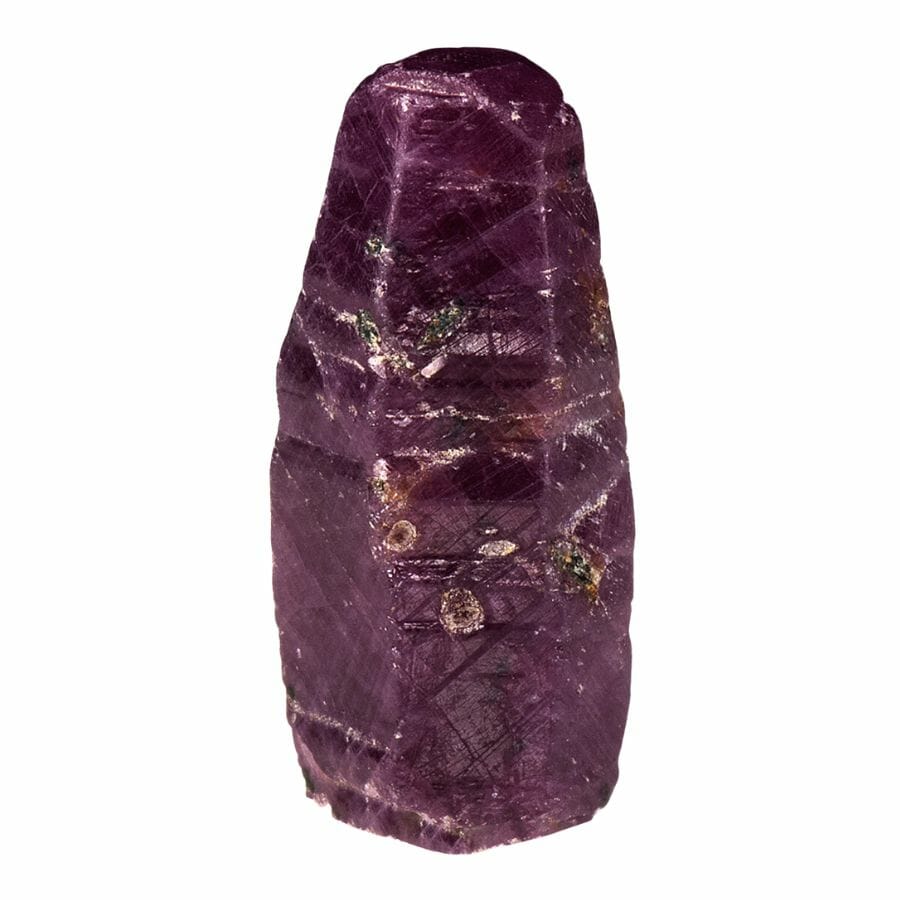
Cleavage in gemstones refers to the way a mineral breaks. It’s a crucial factor for jewelers and gem cutters because it affects how a stone can be shaped and how it might respond under pressure.
Some gems have specific planes along which they break easily, much like wood splits along its grain. But not all gemstones exhibit this characteristic.
Garnet is one of those stones. Instead of breaking along smooth, defined planes, garnet fractures in a more random fashion. Its breaks can be described as conchoidal to uneven.
Think about how glass shatters; that’s similar to a conchoidal fracture. The surface of the break looks somewhat like the inside of a clamshell. Sometimes, the break can be rough or jagged, which is what’s meant by an uneven fracture.
Ruby behaves quite similarly. Just like garnet, ruby doesn’t have cleavage. When it breaks, it typically does so in a conchoidal manner.
The surfaces of these breaks can be described as conchoidal or even splintery, meaning they might look like they’ve splintered or shattered.
Formation – The two gems form in metamorphic rocks
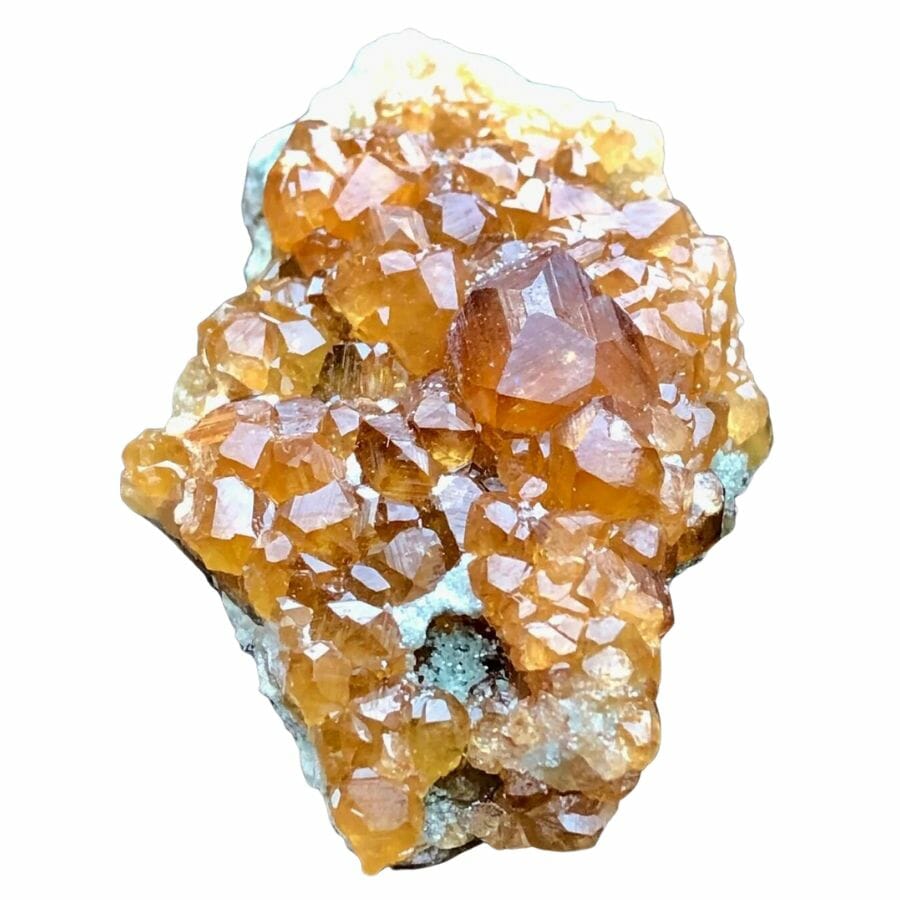
Both garnets and rubies have roots deep in the Earth’s crust, their formation heavily influenced by the intense conditions found there.
When rocks undergo significant changes due to heat, pressure, or the introduction of new chemicals, the process is known as metamorphism. It’s in these extreme environments that many beautiful gems are born, garnets and rubies included.
Garnets usually form in metamorphic rocks. Imagine deep underground, where immense heat and pressure squeeze the rocks. Over long periods, these conditions can lead to the creation of garnets.
As the rock changes and evolves, garnet crystals start to grow, filling spaces or replacing other minerals.
Some of the best places to go rockhounding for rubies are the spots where metamorphic rocks are known to form.
Similarly, rubies owe their existence mainly to metamorphic processes. While these precious red gems can form in various rock types, they are most commonly found in metamorphic rocks, particularly marble.
Marble is a rock that undergoes a transformation from limestone or dolomite under intense heat and pressure. As the marble forms, if conditions are right and there’s enough chromium present, rubies can begin to crystallize within the rock.
Conductivity – Neither gemstone can conduct electricity
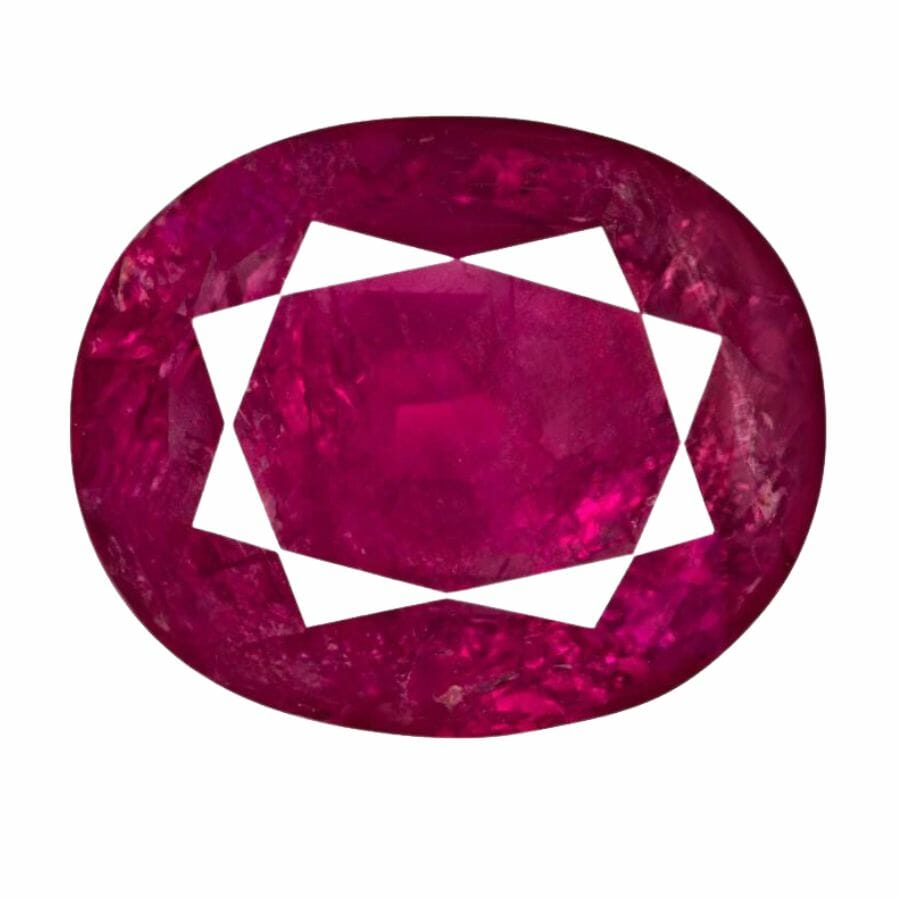
Most gemstones, including garnets and rubies, aren’t the best candidates for conducting electricity. Both of these stones have properties that make them poor conductors.
Garnets, widely known for their range of colors and uses, are typically non-conductive. This means they don’t allow electricity to flow through them easily.
Rubies, being non-metallic, are also poor conductors of electricity. It’s one of the reasons why you won’t find them being used in applications where electrical conductivity is required.
The Easiest Ways to Tell Garnets and Rubies Apart
Garnet and ruby can be tricky to tell apart just by looking. But, there are some cool methods and facts to help spot the difference. We’re going to uncover the secrets to distinguishing between these two gemstones.
Pay attention to the color
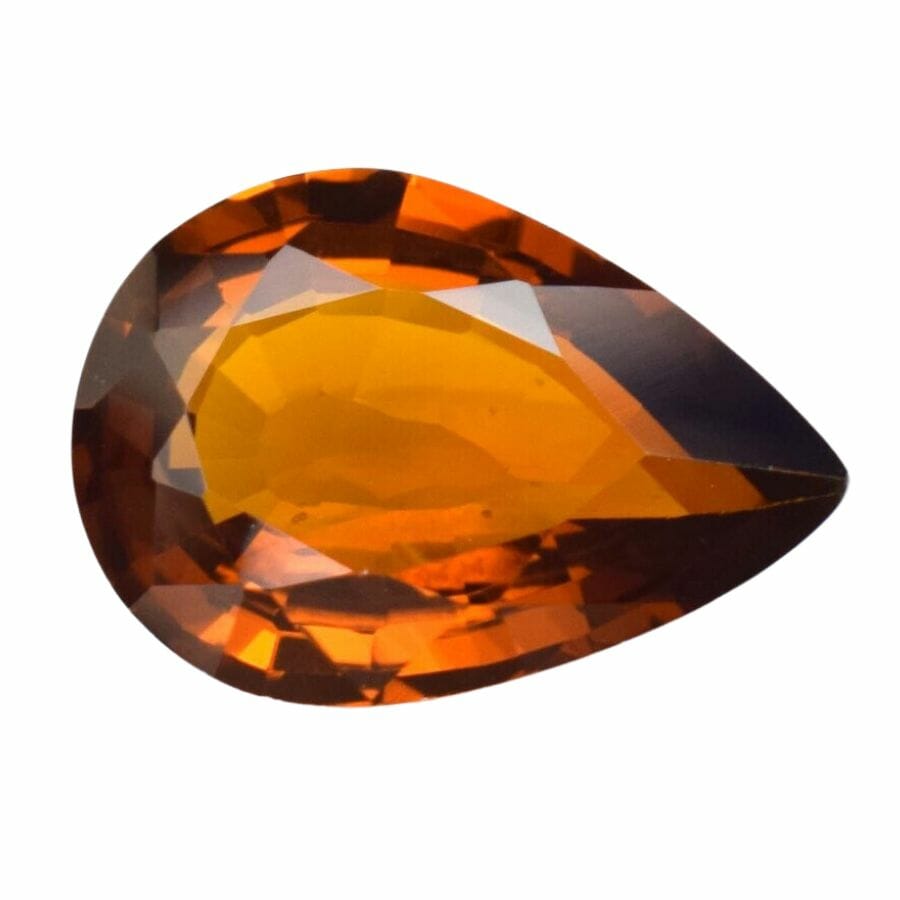
Telling apart garnet and ruby based on color can be pretty straightforward once you know what to look for.
The primary thing to remember is that rubies are always red. They might vary from pinkish-red to deep, dark red, but they don’t stray outside this color range.
On the other hand, garnets are quite versatile when it comes to color. While many people associate garnets with a deep red or burgundy color, they can actually be found in an impressive array of shades.
You might stumble upon green garnets, which are highly prized, or even encounter garnets in shades of orange, yellow, purple, or even rare blues. So, if you’re looking at a gemstone that’s green or orange, it can’t be a ruby.
Fluorescence
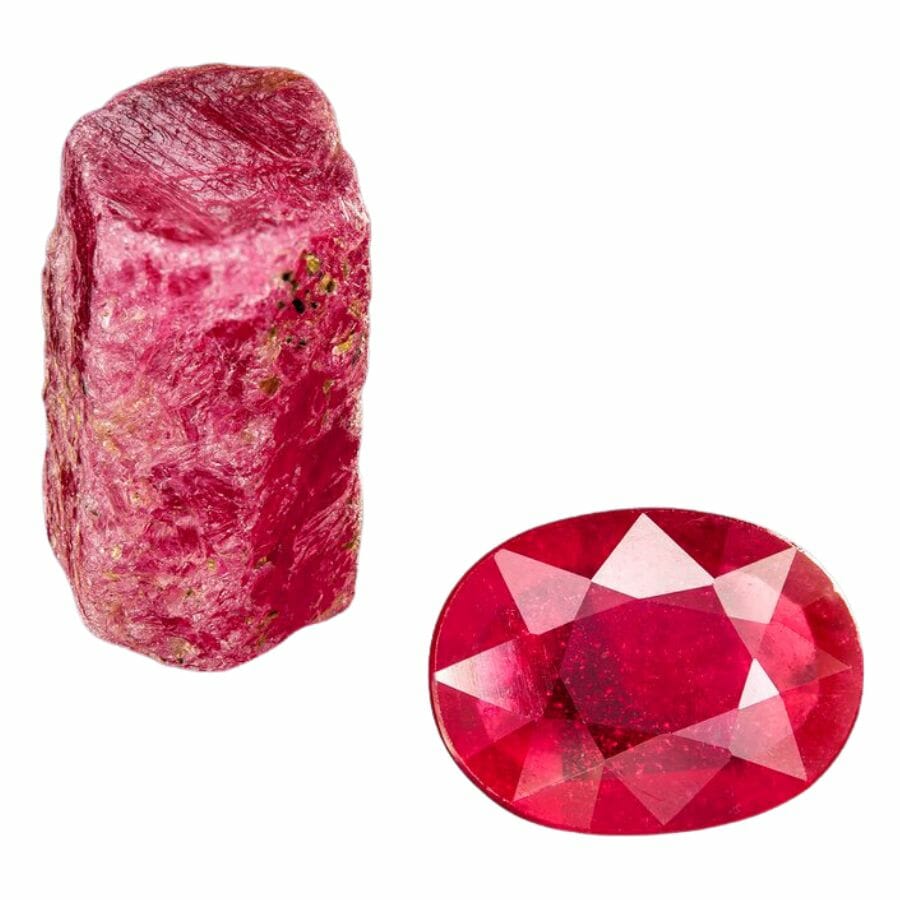
Fluorescence can be a useful tool in differentiating garnets vs rubies. When exposed to ultraviolet (UV) light, certain minerals can emit a visible glow, a phenomenon known as fluorescence.
Many rubies, especially those from regions like Burma, display a striking red fluorescence under UV light. This is due to the presence of chromium in the ruby, which makes the stone glow a bright red when exposed to UV light.
When you put a ruby under UV light, this reaction can make the ruby appear even more vivid and fiery than it does in regular light, giving it a kind of glowy appearance.
On the other hand, garnets generally don’t have this kind of reaction to UV light. Most garnets remain inert and don’t show noticeable fluorescence.
However, it’s worth noting that some rare green garnets might exhibit a weak orange or yellow fluorescence under UV light.
So, if you’re examining a red gemstone and it glows a brilliant red under UV light, it’s more likely to be a ruby. If there’s little to no reaction, it might be a garnet.
This test can be a helpful clue, but it’s always best to consult with a gemologist or use other methods in combination to confirm a gemstone’s identity.
Test the hardness of the stone
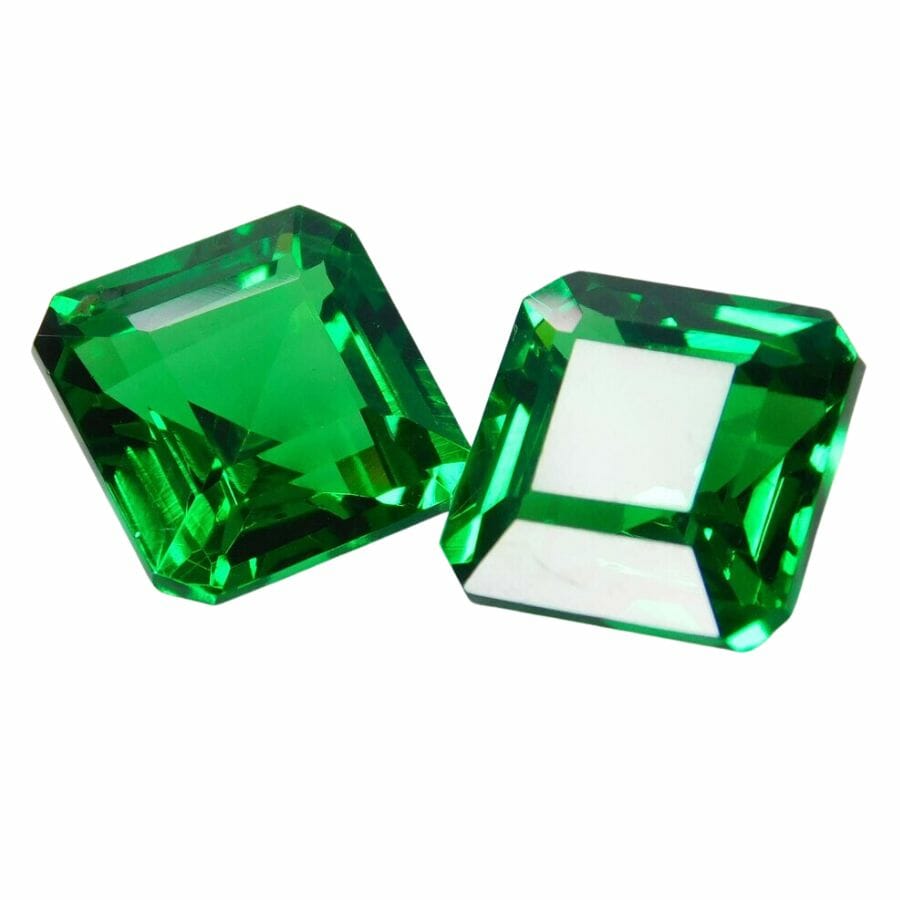
The hardness of a gemstone is a useful clue in identifying it. One of the tools jewelers and gemologists use is the Mohs scale of mineral hardness. On this scale, different minerals are ranked based on their ability to scratch softer ones.
Rubies have a notable hardness, sitting at a lofty 9 on the Mohs scale. This means they are only one step below diamonds, which are the hardest natural substance known.
Because of this, rubies can scratch almost every other mineral, including garnets.
Garnets, while still relatively hard, don’t match up to rubies in this regard. With a score ranging from 6.5 to 7.5 on the Mohs scale, garnets fall below rubies in hardness.
In a practical sense, this difference in hardness means that if you had an unpolished garnet and ruby, you could use the ruby to scratch the garnet, but not the other way around.
To do a simple test, if you can easily scratch the stone with a common steel nail or masonry drill bit, then it’s more likely to be garnet than ruby.
However, it’s always wise to be cautious when performing scratch tests to avoid damaging a potentially valuable stone.

